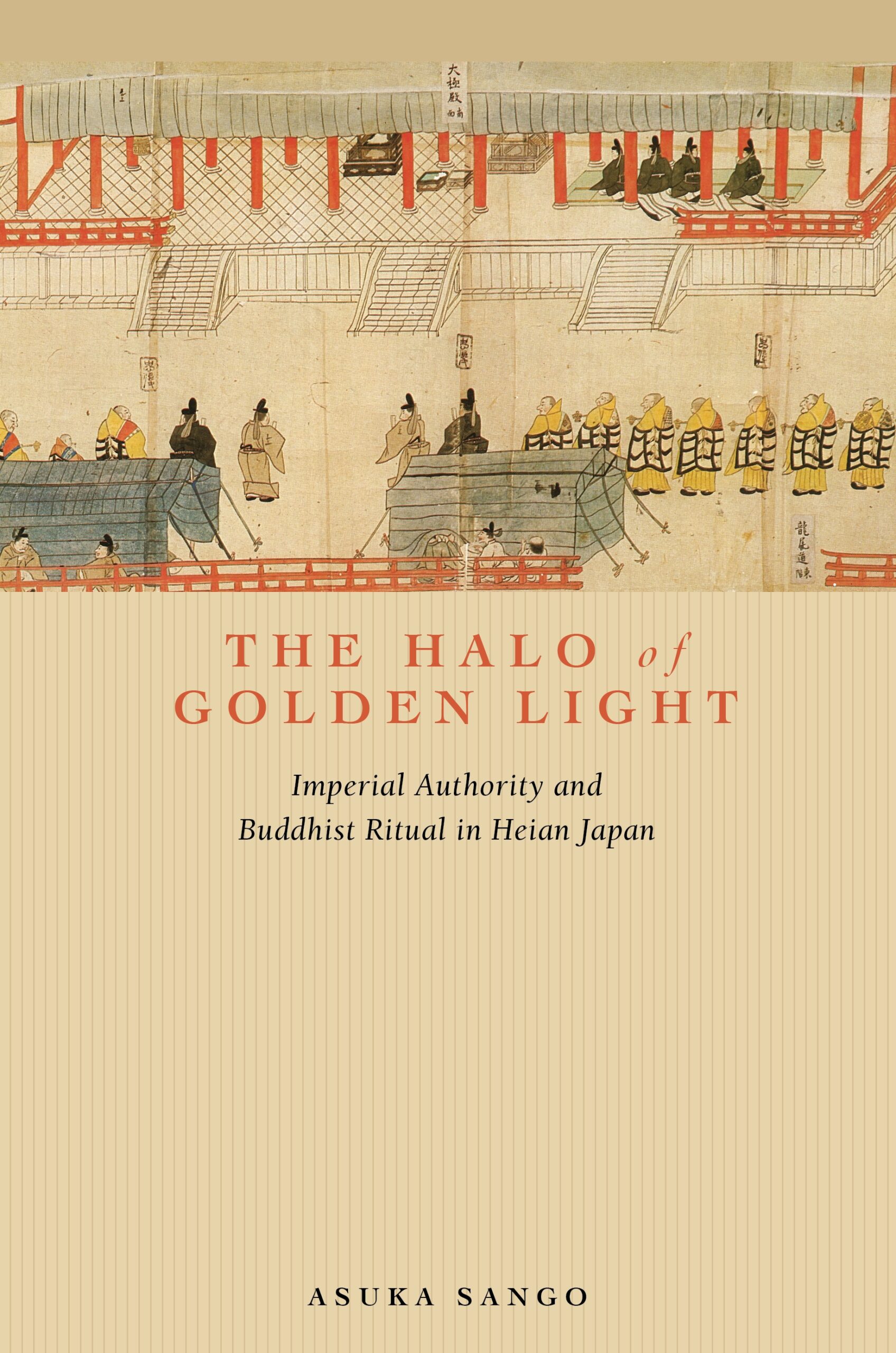The Halo of Golden Light: Imperial Authority and Buddhist Ritual in Heian Japan
- About the Book
-
In this pioneering study of the shifting status of the emperor within court society and the relationship between the state and the Buddhist community during the Heian period (794–1185), Asuka Sango details the complex ways in which the emperor and other elite ruling groups employed Buddhist ritual to legitimate their authority. Although considered a descendant of the sun goddess, Amaterasu, the emperor used Buddhist idiom, particularly the ideal king as depicted in the Golden Light Sūtra, to express his right to rule. Sango’s book is the first to focus on the ideals presented in the sūtra to demonstrate how the ritual enactment of imperial authority was essential to justifying political power. These ideals became the basis of a number of court-sponsored rituals, the most important of which was the emperor’s Misai-e Assembly.
Sango deftly traces the changes in the assembly’s format and status throughout the era and the significant shifts in the Japanese polity that mirrored them. In illuminating the details of these changes, she challenges dominant scholarly models that presume the gradual decline of the political and liturgical influence of the emperor over the course of the era. She also compels a reconsideration of Buddhism during the Heian as “state Buddhism” by showing that monks intervened in creating the state’s policy toward the religion to their own advantage. Her analysis further challenges the common view that Buddhism of the time was characterized by the growth of private esoteric rites at the expense of exoteric doctrinal learning.
The Halo of Golden Light draws on a wide range of primary sources—from official annals and diaries written by courtiers and monks to ecclesiastical records and Buddhist texts—many of them translated or analyzed for the first time in English. In so doing, the work brings to the surface surprising facets in the negotiations between religious ideas and practices and the Buddhist community and the state.
- About the Author(s)
-
Asuka Sango, Author
Asuka Sango is associate professor in the Religion Department at Carleton College.
- Reviews and Endorsements
-
- Asuka Sango’s The Halo of Golden Light discusses topics of great importance for our understanding of sovereignty and its relationship to Buddhist ritual and doctrine from the eighth to the twelfth centuries. The author is right to describe rituals as dynamic events that reflect institutional change; the analysis of rituals and of their patrons and participants reveals much about the evolution of the state and the position of the emperor during the Nara and Heian periods.
—Monumenta Nipponica - To conclude, scholars and students of Heian Japan will find much of interest in this monograph, which provides an excellent overview of the Misai-e Assembly.
—Journal of Japanese Studies The eminent readability of this book should make it especially appealing to graduate students, Japan specialists who do not work on the Heian period, and Buddhist studies scholars who do not focus on Japan. . . . As a historical study that accounts for the crucial status of ritual in the production and maintenance of political authority, Sango’s work should also draw the attention of comparatists, religious studies scholars, and
historians.
—Journal of Religion in Japan- Clearly a title for the special interest reader, "The Halo of Golden Light" nevertheless provides an intriguing portrait of power during the Heian Period.
—The Japan Times - This book is a study of the complex and diverse ways that Buddhism intersected with the political authority of the emperor and other elite ruling groups in Japan’s Heian period. It also elucidates Buddhism’s system of religious learning and clerical ranks, specifically how it was structured around an annual cycle of ritualized public lectures and debates by priests from various temples. The work’s primary focus is the so-called Misai-e Assembly, an imperially sponsored ritual event each year based on the Golden Light Sūtra, which was a platform for portraying the emperor as a virtuous Buddhist ruler. Using this as a starting point, Asuka Sango explores widely other lecture-and-debate rituals in the Heian period, Buddhist learning and scholastic works that were inspired by this system, the various ways that these rituals were diversified in Japanese history, and how the emperor and subsequent political competitors (principally, the Fujiwara regents and the office of retired emperors) employed these rituals to assert their own authority. In short, this work is a study of Heian Buddhism in a much wider context through the prism of lecture-and-debate rituals. It reveals to us lucidly both the collaborations and the tensions that existed between Buddhist institutions and political elites in Heian Japan.
—James C. Dobbins, Fairchild Professor of Religion and East Asian Studies, Oberlin College
- Asuka Sango’s The Halo of Golden Light discusses topics of great importance for our understanding of sovereignty and its relationship to Buddhist ritual and doctrine from the eighth to the twelfth centuries. The author is right to describe rituals as dynamic events that reflect institutional change; the analysis of rituals and of their patrons and participants reveals much about the evolution of the state and the position of the emperor during the Nara and Heian periods.
- Supporting Resources
-










